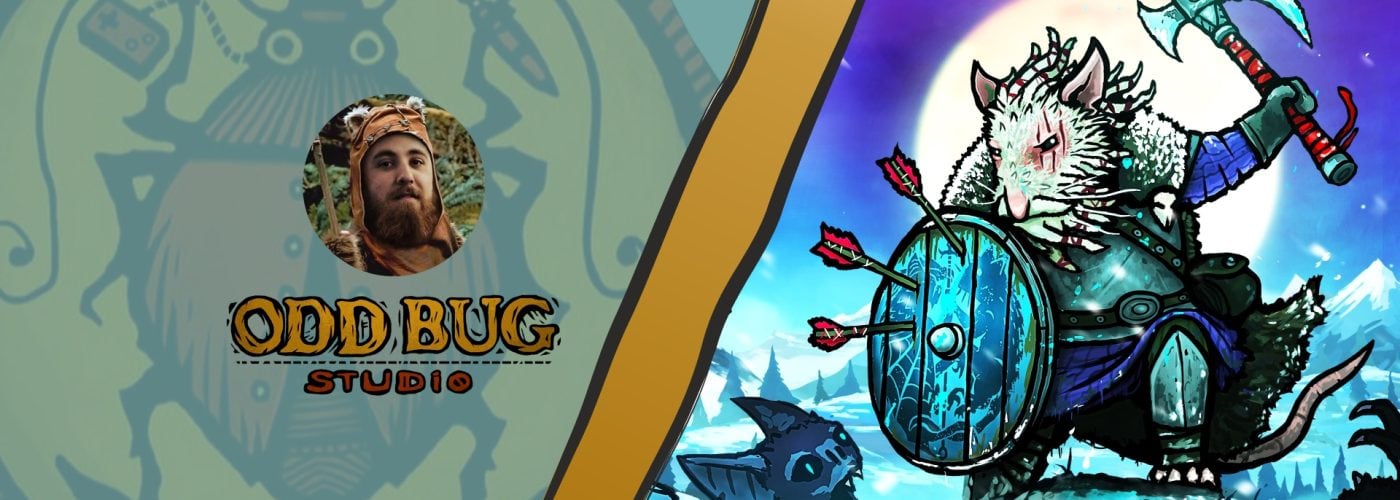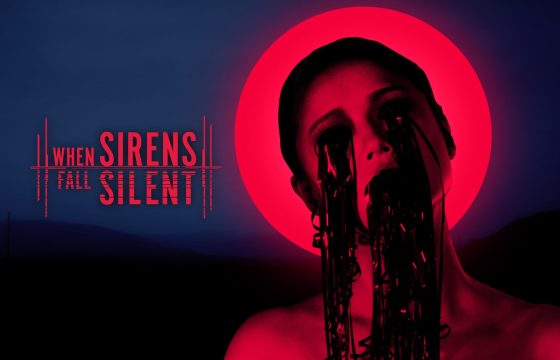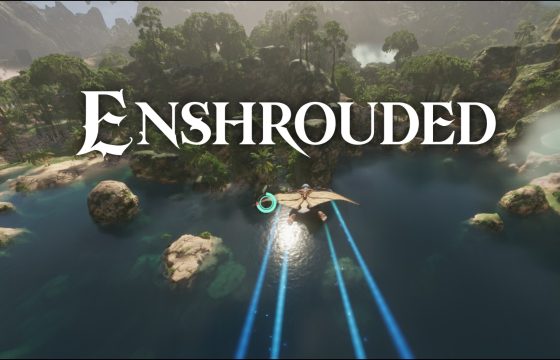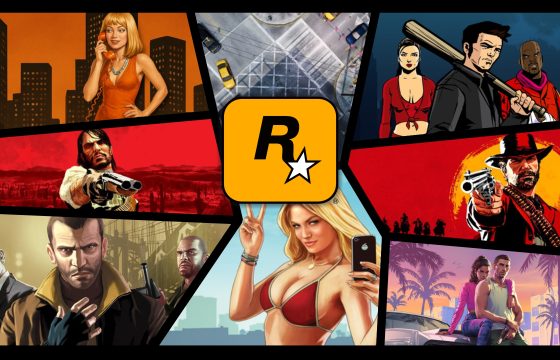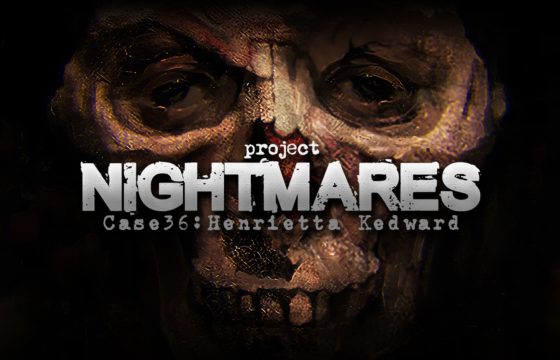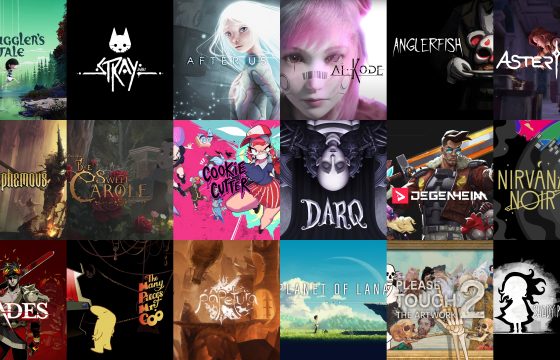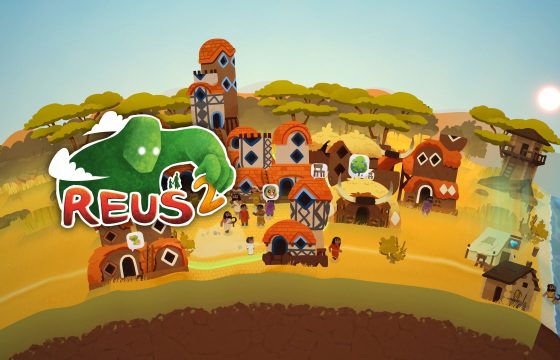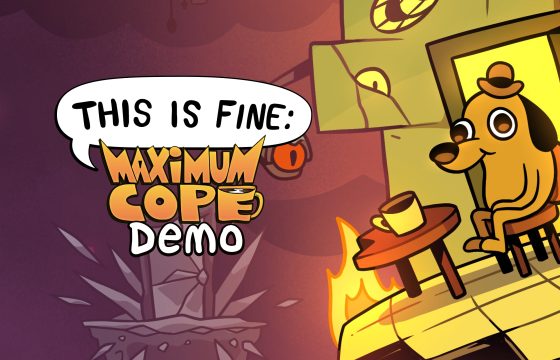Story, setting, characters, gameplay, combat system, and much more – here’s everything we know about the sequel to Tails of Iron, Whiskers of Winter.
Today, let’s revisit Tails of Iron 2: Whiskers of Winter, the highly anticipated sequel to the 2021’s Action RPG developed by Odd Bug Studio and published by United Label and CI Games (for further information on the title, click here).
Announced during the Future Games Show Spring Showcase 2024, held on March 21, 2024, the sequel comes in response to the exceptional feedback from players on Redgi’s rat-adventure. This sequel aims to build upon the successes and achievements of the first installment, and create a game that is much more than just a simple sequel.
Therefore, we took the opportunity to have an extensive and in-depth conversation with Jack Bennett, co-founder, designer, and producer at Odd Bug Studio, seizing what appeared to be the perfect moment to address all our curiosities and the many questions we had about the sequel.
If we’ve piqued your curiosity and you’re eager to learn all about the new features coming to Tails of Iron 2: Whiskers of Winter, don’t miss this interview, packed with insights, details, and fascinating tidbits about Odd Bug Studio’s latest project.
The Interview
Hi Jack, welcome back! The first thing I want to ask you is, how are you feeling about the sequel? How has the community responded to the announcement of Tails of Iron 2: Whiskers of Winter? And how do you and the team feel about the prospect of carrying on this adventure and opening up a new chapter, a fresh tail, in the Ratdom’s saga?
So, when we first created Tails of Iron, it was always planned to be more than just one game. We knew from the beginning that we wanted to expand with a sequel and explore other stories within the world. It’s exciting for us to have the opportunity to put it out there. However, when we initially released Tails of Iron, we were creating it with the hope that there would be an audience for it. That was both exciting and a little scary.
With Tails of Iron 2, it’s different. We know there are people who love Tails of Iron and are eagerly anticipating the sequel. That’s quite a change for us—to know that people want to play it and are excited for it. However, there’s also a sense of apprehension this time, stemming from the hope that people will be pleased with what we’ve accomplished. I believe people will trust that we know what we’re doing with it, but I also hope they enjoy it. It seems to be a good story!
What was the inspiration, the spark that led you to strongly believe that creating a sequel to Tails of Iron would be a great idea? And what persuaded you the most to turn this idea into reality?
As I mentioned, our intention was always to create more games within the same world. Just like with franchises such as Redwall or Mouse Guard, or even Wind in the Willows, there’s an aspect where expanding with more games allows us to thoroughly explore and expand upon that universe. It enables us to showcase different worlds and characters, which is incredibly exciting for us as storytellers and game designers. Our aim is not only to create a world but to truly push the boundaries of its depth and to develop its characters.
What’s particularly exciting for us about Tails of Iron 2 is the opportunity to explore the world further. In the first game, we introduced rats, frogs, and moles, but now we have the chance to depict other races within the world, how their world sort of society works, how their world exists, and how they interact with one another. That’s the interesting step forward that Tails of Iron 2 allows us to do.
Considering the positive reception to the first game, including being featured on PlayStation Plus and reaching a wider audience, we hope that the same audience will return to enjoy Tails of Iron 2.
What has changed, if anything, in these three years at Odd Bug Studio? And perhaps most importantly, do you perceive a shift in the team’s vision, identity, and operational approach compared to the past?
I’d say, first of all, Tails of Iron 1 was released at the very end of the pandemic when we were all still working closely together in an office. For the development of Tails of Iron 2, however, we’re now working remotely through Discord, which obviously comes with its own challenges. However, it also provides us with much more freedom in terms of our work schedule. Additionally, our team has grown slightly, with more audio guys on board and another artist helping to finish up the game. So, the game has expanded slightly, both in terms of content and team size.
In terms of us as individuals, some of us have had significant life changes, such as one of us having a child and others getting dogs. These are positive developments that came about following Tails of Iron 1. However, I would say that in Tails of Iron 2, we’ve maintained the same workflow. The story remains the driving force, the art is the piece that grabs them, and the gameplay is what keeps players engaged. That aspect has remained consistent throughout Tails of Iron 2.
As the saying goes, “History repeats itself”. This suggests that, much like the events we experienced in the Redgi saga, this time around, the reason for the outbreak of war in the North remains the same: the desire for revenge. What is the triggering event that leads to the feud between Rodents and Dark Wing Bats?
In Tails of Iron 1, the frogs serve as a constant evil presence in the world. However, the Dark Wing Bats are more akin to the White Walkers from Game of Thrones. They are the ancient enemy that people have forgotten about, almost like a fairy tale that nobody believes really existed. The events at the start of Tails of Iron 2 mark their resurgence.

Now, as you play as Arlo, who serves as the warden of the North, positioned at the most northern point of the Ratdom, well beyond the Crimson Keep and nestled in the Snowy Wastes, he faces the daunting task of confronting this newfound threat. These rats serve as the first line of defense against their resurgence.
While there is a connection to Redgi’s story, it’s important to note that these bats are vastly different – they’re almost like undead creatures, belonging to another world entirely, which elevates their threat to a much higher degree.
The announcement and trailer of Tails of Iron 2: Whiskers of Winter introduce us to a new, previously unseen species in the world of Tails of Iron: the main threat that players will have to face in the game, the Dark Wing Bats. Would you like to reveal some more details about the blood-starved evil that dominates the North and how players’ approach to gameplay will need to change with the introduction of this new ancient and formidable enemy?
The main aspect that drew us to the Bats was their ability to introduce verticality into our combat. While fighting the frogs primarily involves side-to-side combat, with a few characters hovering and then landing, the bats allowed us to incorporate airborne characters that shoot down at you. This added more depth to our combat system.
In terms of the story, the Bats are linked to the creation of a monstrous creature known as The Sky Scorcher – as featured in the first trailer, it’s the large flying bat. Essentially, they serve as the dragons of our world, the Sky Scorchers. With their introduction, we also introduced elemental effects – they breathe fire and have an ice tail. This upgrade in combat allows your weapons and armor to deal ice or fire damage, as well as providing resistances to these elements. As a result, players can craft armor and weapons that either enhance their ability to deal such damage or resist it. Overall, we believe they have added another layer of depth to our combat system.
From the material you’ve shared, we can see the presence of many new animal species in the sequel. From the well-known bloodsucking Dark Wing Bats to new dangerous and lethal wild beasts and what appears to be a population of owls. Would you be willing to delve into more detail about the new races that will be introduced in the sequel and their connection to the Northern lands?
Of course. Well, as you mentioned, there are the Owls; we’ve already introduced them a bit. They have their own village called Nest Minster, which is settled in the Golden Forest, located to the west of the north. So, that’s a new region that we’re showcasing as well.
Additionally, there are some other races making a return, such as the Rabbits, whose origins we delve into a bit. We also have other races like Fish People and some Beavers. We’ve highlighted some of these characters in the DLCs, such as the Beavers, and now we’re featuring them more prominently in the sequel.
And I especially want to delve into the species that players got a taste of in the DLC: the Traveling Squirrelfolk. That’s another aspect that aligns perfectly with what I aim to achieve. I’ve hinted at the squirrel story a bit, but I’d like to fully explore how the squirrels lost their keep and the reasons behind the rampant growth of mushrooms in the Bright Fir Forest. These stories add depth to the world, which is incredibly exciting.
As I mentioned earlier, Tails of Iron 1 primarily focused on frogs, rats, and moles. However, in Tails of Iron 2, we aimed to showcase the diversity of the world. It’s a crucial aspect of the game – exploring how all these species interact and coexist. Essentially, it’s the underlying story of Tails of Iron.

Regarding the game world, what we’re eager to ask is how the vast, snow-ravaged kingdom in Tails of Iron 2 will be structured and how the areas will be distributed and filled compared to what happened in the first installment? Will there be substantial changes, or will the game structure remain more or less the same?
So, first of all, in Tails of Iron 1, there were five areas that you could explore. In Tails of Iron 2: Whiskers of Winter, that’s expanded to seven, making the game much larger in terms of the areas you can visit. However, the core concept of the game remains the same: there’s still the main story quest, with each area offering its own set of side quests. What we’ve aimed to do is to enhance the side quests to be more story-driven. In the first game, they were present but few were story-based.
Now, in Tails of Iron 2, we’ve introduced a hunting system. Each area is inhabited by roaming monsters that appear depending on the time of day. Different monsters emerge at different times, whether it’s day or night. Each side quest involves hunting down these monsters, which have their own behaviors like sleeping, eating, healing, and fleeing. Once you’ve defeated and hunted a monster, you can harvest materials from it. These materials can then be taken back to your settlement to craft new weapons, armor, shields, and more. As a result, the side quests are now much more integrated into the overall upgrade system as you progress through the game.

Tails of Iron offered a gameplay longevity of approximately 9-10 hours with a well-balanced mix of main questline, side missions, and tasks. Will there be any particular innovations or greater variety in the available side quests to provide players with more alternatives and choices between the main story and additional quests? And, if not necessarily an exact number but even an estimate, do you anticipate that this sequel will offer a greater or roughly similar number of hours compared to Redgi’s adventure?
In the first game, we estimated it to be around 8 to 10 hours long, but for this game, we’re looking at more like 15 to 20 hours. It’s almost double the size of the first game. The main quest will likely take you about 12 to 14 hours, and then the side quests and other activities will make up the rest of the time.
There’s a solid mainline quest, longer than in the first game, and we’ve added various side quests, including collection quests that you need to seek out. For example, once you’ve completed a monster-hunting side quest, those monsters then start appearing randomly in the world. So, you could be on a mainline quest and suddenly encounter a spider or a snake. How you play and the time of day will also affect which monsters appear.
Additionally, we’ve made some changes to the building system. In the first game, when you were rebuilding your keep, it was more linear, but now we have a builder that allows you to place buildings within your settlement as you see fit, allowing for customization of your settlement’s layout. This means that each player’s Winter’s Edge will look slightly different, and how you choose to customize it will impact your gameplay experience. Overall, there’s a lot more content to explore and engage with this time around.

And as for the combat system, in Tails of Iron 2: Whiskers of Winter, what kind of experience are you aiming to achieve? Will the learning curve be roughly the same, or will you raise the difficulty level, making the battles more challenging and demanding?
We aimed to maintain a consistent learning curve because the storyline of Tails of Iron 2 is designed to be accessible even if you haven’t played the first game. You’ll still be able to enjoy and understand the narrative. However, if you’ve played the first installment, you’ll have a deeper understanding of the characters, plot, and setting.
Regarding difficulty, we’ve played with that a little bit. In the first game, there were no i-frames, so we’ve introduced them in Tails of Iron 2. This allows players to dodge through projectiles or wait until the last moment to block and then dodge through attacks, creating more intense moments. To balance this out, we’ve introduced elemental effects such as poisoning or freezing, which can slow down the player.

Additionally, we’ve implemented a new mechanic: every weapon now has a sharpness bar. As you use a weapon, its sharpness decreases from green to red. When it’s in the green zone, you deal full damage, but in the red zone, you do no damage and bounce off enemies. This adds another layer of strategy to combat as players must manage their weapon’s sharpness during battles, similar to how they manage their flask. Therefore, our goal is to rebalance the combat system, creating much more intense moments throughout.
What will be the main innovations coming in the sequel on the gameplay side, and if you can talk about it, what will the new monster hunting mechanic entail and how the day-night cycle will influence both the world and the gameplay system?
The day-night cycle operates automatically, like a constant background element as the game transitions between day and night and back again.
Now, let’s delve into the hunting system. In the game, you’ll encounter quests and side quests that task you with hunting specific creatures, such as snakes. Once you’ve dispatched the target, that creature becomes a persistent threat in the game world, leading to more of its kind appearing. To help you keep track of these creatures, there’s a bestiary available. It provides detailed information on the creatures’ drops, weaknesses, strengths, and preferred time of appearance.
As you progress through the game, these creatures can surprise you by appearing anywhere on the map at any time. Engaging them in combat triggers a fight, during which, if you manage to sufficiently lower their health, they may attempt to escape to recover by sleeping or eating. You then have the choice to either pursue and hunt them down again or let them go. This dynamic system ensures that unexpected encounters can occur even during mainline quests.

Upon defeating these creatures, you can harvest materials from them, which you can then use to craft armor and weapons. For example, defeating a snake allows you to craft snake-themed gear, such as armor and helmets, providing poison resistance or inflicting poison damage with weapons. Furthermore, you now have the option to obtain individual armor pieces, including helmets, armor, pauldrons, and shields. This allows for greater customization, enabling you to mix and match pieces to create your desired build. Whether you prefer heavy armor with poison resistance and a hint of ice, or something entirely different, like a combination of bat and spider-themed armor, the choice is yours. The goal is to encourage players to experiment with different combinations to create an outfit that suits their playstyle.
One of the questions we are particularly eager to ask is: why have you chosen Arlo as the protagonist for the sequel? Is it a purely stylistic decision, driven by Arlo’s strong temperament and charisma, or is it the outcome of specific game design decisions aimed at offering players a wholly different experience, controller in hand, compared to their time with Redgi?
We aimed for the northern region to evoke a Viking ambiance, which naturally led to the creation of a bigger, more imposing character. He’s taller than Redgi but not as massive as Dennis was, striking a sort of middle ground.
However, it’s also a decision influenced from a perspective standpoint. Given the presence of flying enemies, the camera needs to zoom out to accommodate them, requiring a larger character for better visibility in the zoomed-out perspective. So, indeed, it’s a decision driven by both design considerations and the narrative’s desire for a Viking-inspired character.
And what about the new enemies and bosses? Will some of the bosses in Tails of Iron 2 be even bigger than Green Wart, the final boss of the first installment?
Absolutely! We’ve got bosses that are twice the size of Green Wart now. While the Dark Wing Bats are more or less the same size as the creatures we kept in the first installment, some creatures, especially the roaming monsters, are literally massive compared to Green Wart’s size.

The ending of Bright Fir Forest suggests, with the death of the Warchief and the rest of his family, the end of the Green Wart frog dynasty and the saga of King Redgi. Yet, in the sequel’s screenshots, we can see Arlo fighting alongside a frog. This could lead us to the conclusion of the formation of an alliance between the North and the South to combat the threat of the Dark Wing Bats, a truce between Rodents and Frogs. The question is, has the Redgi saga truly come to an end, or will there be references or even crossovers or flashbacks that reconnect us to the Redgi saga or even bring the two heroes together?
I won’t reveal specific character details to avoid spoilers, but I can share this: In Tails of Iron 1, Redgi’s story is just one of many within the broader universe of Tails of Iron, much like Arlo’s story is also a single tale within this world. Given that they both inhabit the same world and exist during a similar time period, it’s entirely possible that they’ve crossed paths before.
For a more concrete example, in the Bloody Whiskers tournament at the end of the DLC, there was a boss fight with Avor: The Warden of the Northern Wastes, accompanied by a young rat providing cover with a bow and arrows. That rat happened to be Arlo, Avor’s son. So, they’ve already had a small encounter in the first DLC, indicating that such meetings are possible within the same shared universe.
Regarding the frogs, Green Wart was simply one tribal leader among them. While there may have been conflicts between his tribe and the rats, it doesn’t imply that every frog is inherently evil. In fact, it will be interesting to show you the other side of the frogs, something we didn’t explore in the first installment.
In Tails of Iron, the presence and performance of the omniscient narrator was a brilliantly fitting choice made by you, which made Redgi’s story even more memorable, if we may say so. In the sequel, will there be any changes in terms of voice acting? Will there be another voice to accompany the storytelling, or will Doug continue to be the sole narrator of Arlo’s story? And, if you can reveal it, is there anything in particular that you’ve asked Doug for this new adventure?
No, we’re not considering it. There’s no need for another narrator; it’s all Doug. We enjoy working with Doug, so we wanted to keep him as involved as possible. Doug is easy to work with and very kind. Besides, his voice has become inseparable from Tails of Iron. So, there’s no way we could have anyone else do it. We can’t imagine not having him narrate, and since we love working with him, why would we change that?
Let’s conclude with a rather classic question, but one we believe is necessary to ask in order to understand the goals you’ve set for yourselves with this new project. What are your expectations for the sequel?
We simply want Tails of Iron 2 to be the best it can possibly be. We don’t set specific sales or player engagement targets; our main goal is to create a game that people will love and become passionate about, much like what happened with Tails of Iron 1. We’re delighted when players join us on this journey, and that’s what we aim for.

Next stop: The Northern Lands
Here we are again, at the moment of farewells for today. But before we wrap up, we want to extend our heartfelt thanks to the teams at Odd Bug Studio and United Label, and especially to Jack for his availability and for providing invaluable insights and tidbits about Arlo’s new rat-adventure.
While we eagerly await the release of the sequel, scheduled for 2024, don’t forget to visit Odd Bug Studio’s official website. If you’re interested in the game, be sure to add Tails of Iron 2: Whiskers of Winter to your wishlist on Steam.
And in case you missed it, you can find our spoiler-free review of the latest DLC, Bright Fir Forest, for the first installment of Tails of Iron right here.
That’s all for today. We look forward to welcoming you once again to the Ratdom with many new wonderful stories! See you soon, little curious Rodents!

